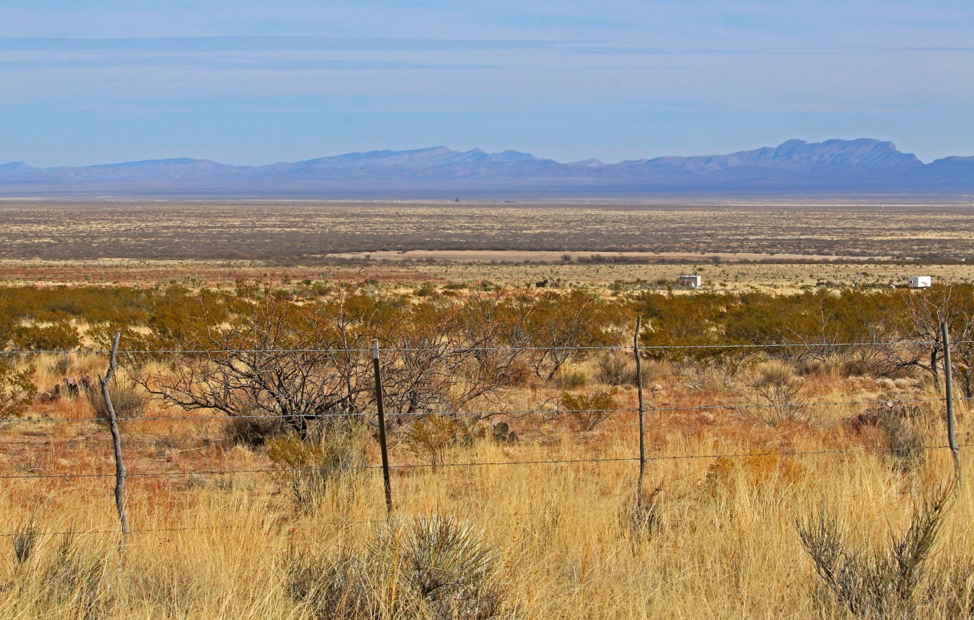
This post is part of the LTER’s Short Stories About Long-Term Research (SSALTER) Blog, a graduate student driven blog about research, life in the field, and more. For more information, including submission guidelines, see lternet.edu/SSALTER
By Madeline Buhman, graduate student at Arizona State University and the Jornada Basin LTER
I’m told scientists should not anthropomorphize the organisms we study, but if we’re honest with ourselves, most of us grew up on tales of talking animals and plants that defy imagination such as Little Shop of Horrors, Jungle Book, and Paw Patrol. So today, it’s my pleasure to introduce you to some of the remarkable flora and fauna who call the Chihuahuan desert home—I hope you’ll meet their smug, elitist, shy, anxious selves in person one day.
Mesquite.

Credit: Madeline Buhman, CC BY-SA 4.0.
Over the last century, the Chihuahuan desert has shifted from a classic grassland into a shrubbier, mixed ecosystem. The shrub invaders are primarily the honey mesquite, a pod-producing shrub with fern-like leaves and a pension for winning. The barbed bushes are formidable.
Undisturbed by herbicide, grazing, fire, or competition, the mesquite marches onward through traditional grassland areas, changing the landscape as it goes. Mesquites are unbothered by the evolutionary fact that grasses (a C4 plant) are fundamentally more evolved in terms of water use efficiency than they are. Mesquite (a C3 plant) could care less. Disregarding drought that batters the grasses, the mesquite shoot down a tap root so deep they can access the groundwater. Mesquites are unlikely evolutionary winners, and they know it. Their smug demeanor is evident in their ever-extending range, painful thorns, insufficient shade, and propensity to clog up roadways, rangeland, and anywhere else humans want to be.
Grasses.

Credit: Madeline Buhman, CC BY-SA 4.0.
Specifically black grama, which is the traditionally dominant grass (and plant) of the Chihuahuan desert. Black grama’s historic reign of the desert enabled large scale ranching; the hungry cattle prefer black grama to other feed, and black grama’s perennial return post-grazing made it an attractive ecological partner for ranchers. However, black grama in its erudite wisdom does not prefer to be grazed. It dislikes being frequently downtrodden by cattle and almost entirely reproduces stoloniferously*, with little baby shoots emerging at the base of the parent grass (it’s good to keep offspring close and under close supervision). But cattle snack on stolons as much as full-grown grasses, leaving the grazed black grama scalped and agitated. Increasingly variable rainfall combined with rising temperatures have sealed the deal for black grama: it’s moving on. Done with its unappreciative and uncouth neighbors (mesquite incredibly primitive and boorish, growing anywhere without regard for water or cattle), black grama is moving northward, in search of cooler temperatures, fewer mesquite, and perhaps a more practiced community theater. That’s the sort of thing the black grama enjoys.
Criollo.
Black angus are interspersed with Brahman and criollo in Chihuahuan desert ranching, the latter of which personify desert living. The criollo’s massive horns give the illusion of majesty and authority, but in truth the criollo are tired. Horns are heavy, the sun is hot, there’s not much energy left for thoughts.
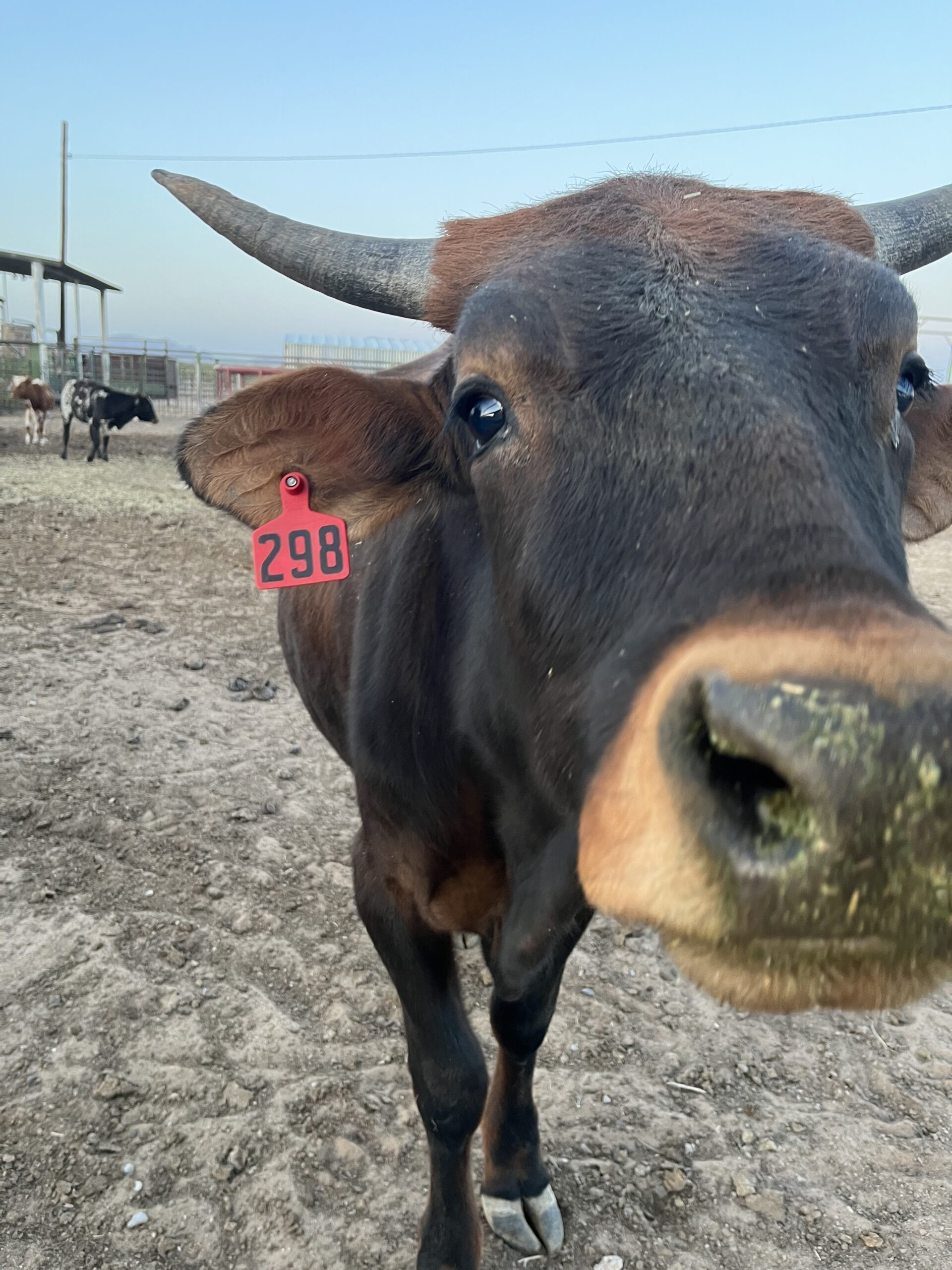
Credit: Madeline Buhman, CC BY-SA 4.0.
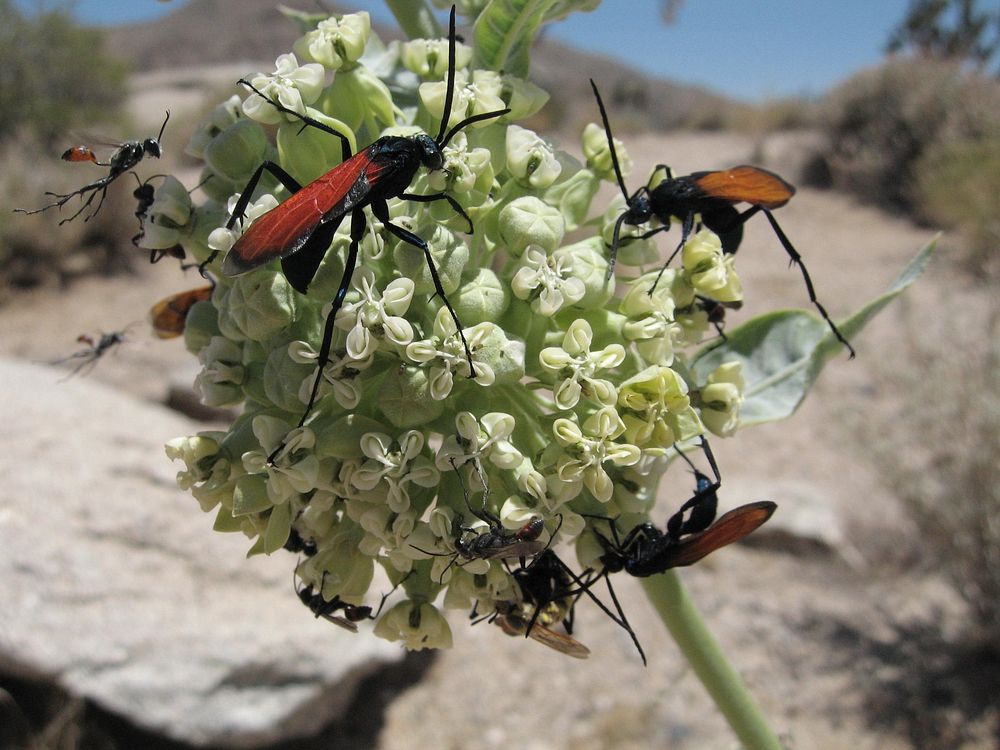
Tarantula hawks (Pepsis sp.) crawl all over the green blooms of a desert milkweed plant (Asclepias erosa). Original public domain image from Flickr
Tarantula hawks.
One of the few mobile creatures in peak summer daylight, these terrifying wasps buzz by at human-eye height, sun glinting off their obsidian bodies, orange wings pulsing, disturbingly large stinger quivering. But never fear, the wasps are uninterested you; they are searching for milkweed and mesquite, the females awaiting the chance to lure a tarantula from its burrow, engage the arachnid in a vicious, protracted battle, and then hopefully lay their eggs in the still living tarantula which becomes a host for the voracious parasitic wasp babies.
Tarantulas.
Tarantulas are shy, and they requested to be left out of this bio, if possible, but if not possible, to please delete, burn, or expunge all information regarding their home addresses prior to publication. They send best wishes to the roadrunners.
Roadrunners.
Chaotic, fearless, sharp as a whip, these birds are never caught unawares. Road runners are soccer moms—often ferrying a flock of unruly chicks across roads, under bushes, and through washes. Although members of the cuckoo family roadrunners pride themselves on having their heads on straight and a checklist of tasks as long as the Rio Grande. They also are one of the few predators of Tarantula hawks (and rattlesnakes).
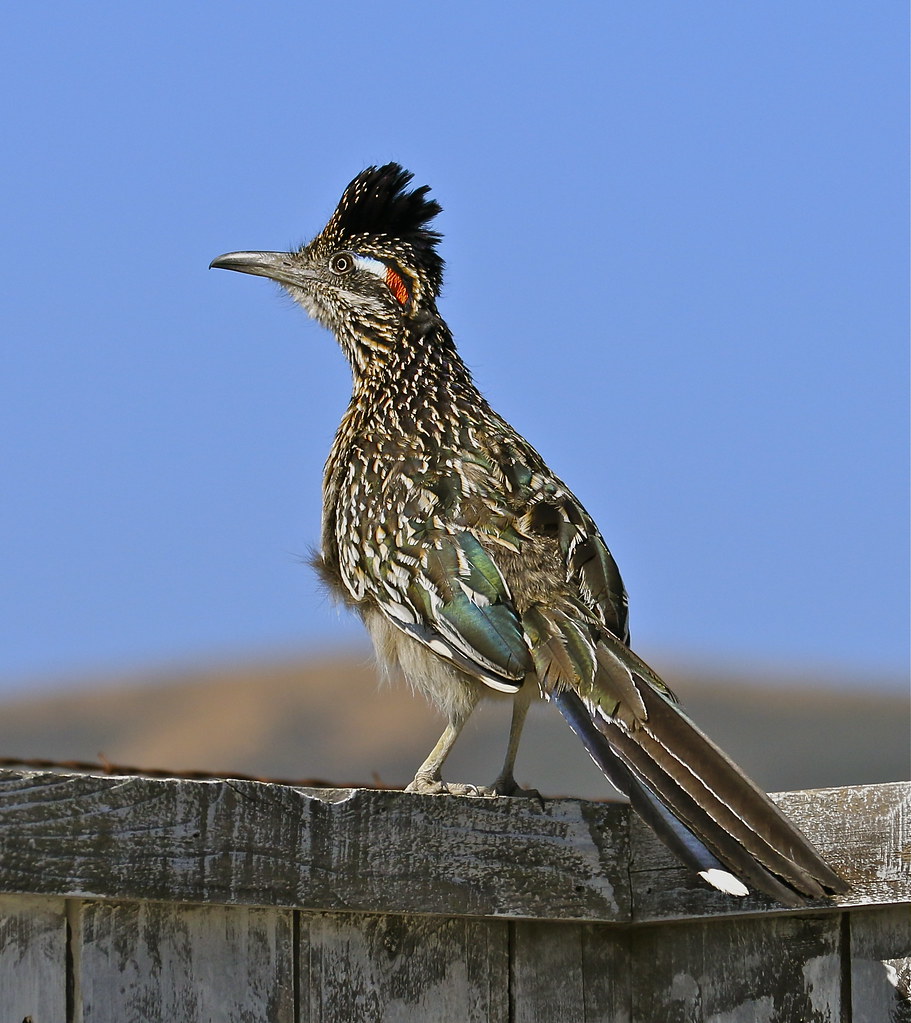
Credit: Teddy Llovet via Flicker, CC BY-NC
Rattlesnakes.
There are many rattlesnakes, all of whom heard that you could opt out of a bio (they’re prone to eavesdropping, and heard the tarantulas demure my interview invitation), and they too shied from the spotlight. They, however, send nothing but bad regards and ill wishes to the road runners. Tensions run high in desert social circles.
Oryx.
12 oryx landed in the Chihuahuan desert in the 1970s, and in the subsequent years they have bred exclusively with one another, making the most of their tiny genetic pool. Often majestic, more often foolish, the oryx have no regard for vehicles in motion, and make up the rules as they go. After all, how would they know that two straight horns are the standard for oryx? One curly one straight, or maybe no horns at all—it’s hard to know you’re inbred when you’ve never met your regular-bred African cousins.
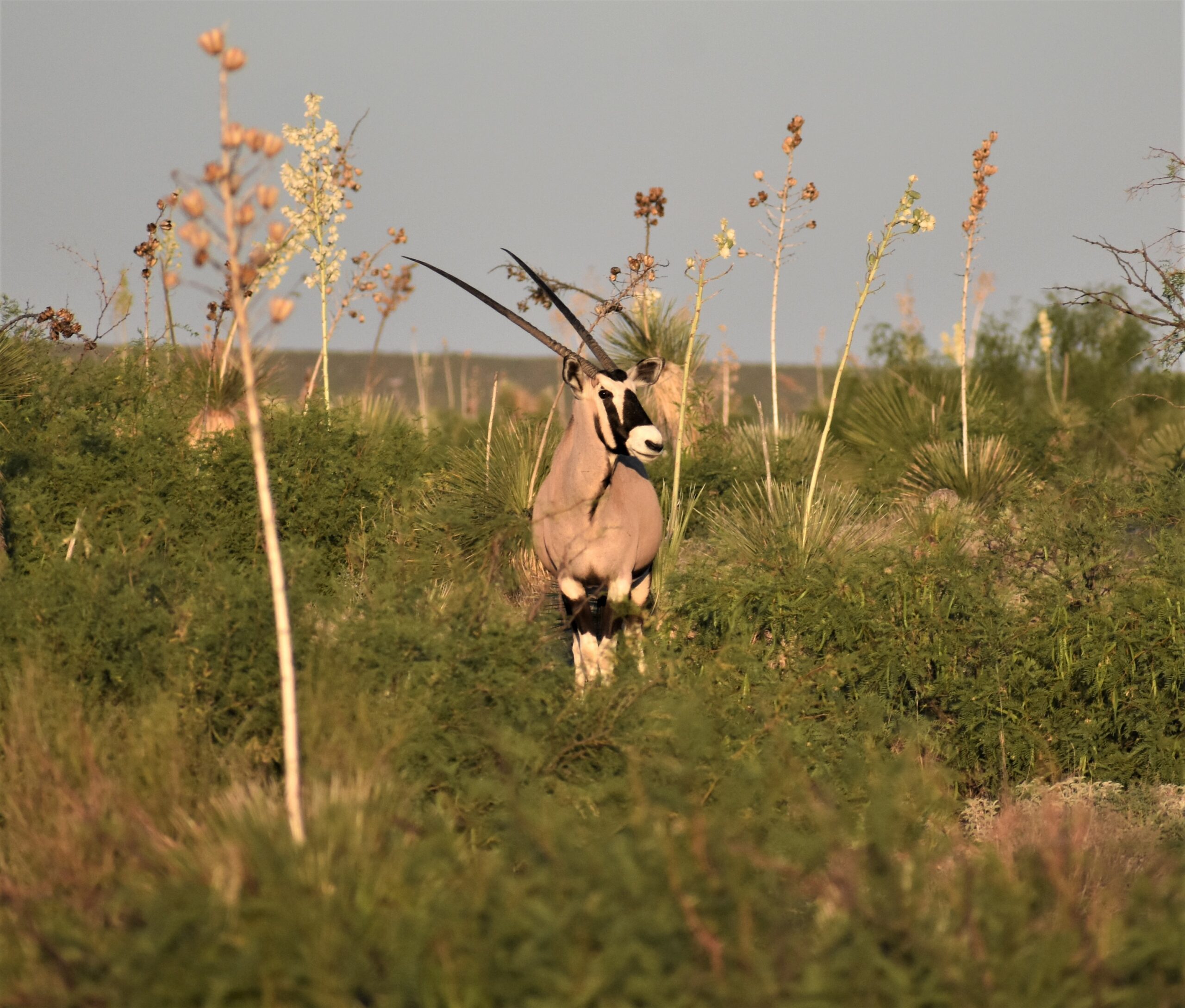
Credit: Ryan Schroeder, CC BY-SA 4.0.
Lagomorphs.
More commonly referred to as rabbit or hares, these creatures are lightning fast and excellent at blending into their grassy or shrubby backdrops. Life is a constant balance of hide or flight. How long can they wait until they make a run for it? Living with constant anxiety takes its toll, and it should be noted that lagomorphs are no fun at parties. Prone to speaking too quickly, their eyes are constantly darting from one partygoer to the next, and you get the sense they’re never truly listening to what you’re saying.
Lizards.
Lizards, however, are the life of the party. Some electric blue, all highly spontaneous. They take any dare, zipping from shrub to shrub even in peak sunshine hours, dashing over human feet, taunting the snakes and hawks. Lizards are here for a good time, not a long time.
The sun.
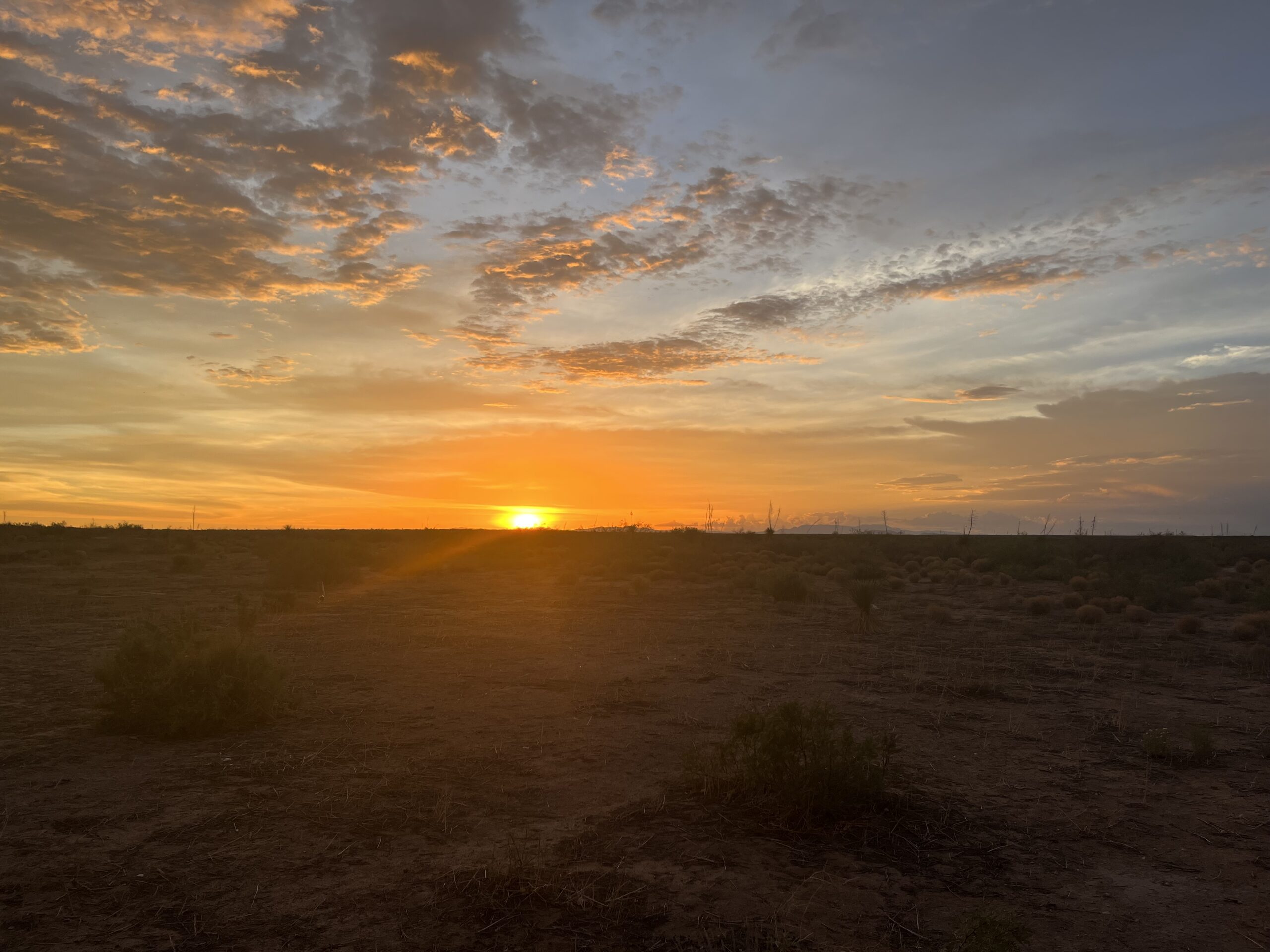
Credit: Madeline Buhman, CC BY-SA 4.0.
The sun is neither flora nor fauna, but everyone knows them intimately. Impersonable, impregnable, and prone to blistering outbursts which last for months on end, the sun rules the desert. Defied only by monsoonal rains (and the occasional winter storm), the sun rules with an iron hand disposing life and suffering but does so dispassionately. The sun always has the final say.
*Not a real word, I know.

Madeline Buhman joined the Jornada Basin LTER the fall of 2021 as a Ph.D. student in the ELS program. She is interested in the effects of variable precipitation of dryland ecosystems, and the role of climate change in these ecosystems.










